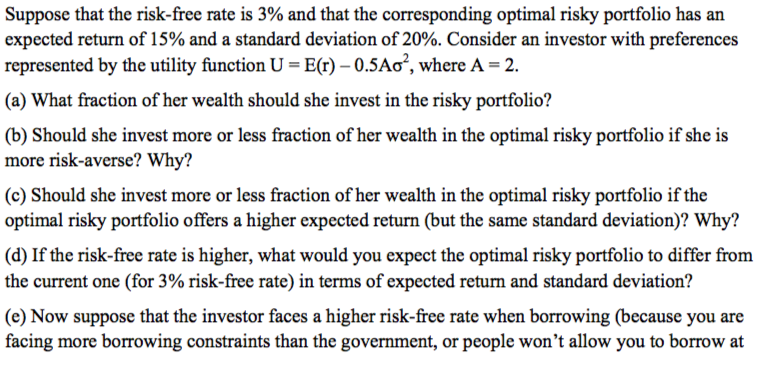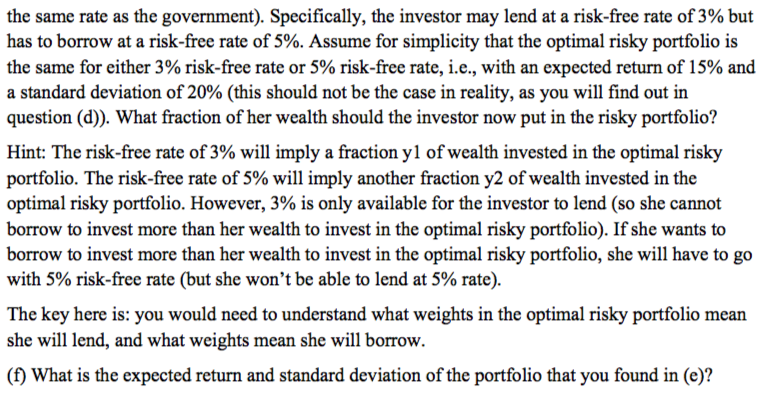Answered step by step
Verified Expert Solution
Question
1 Approved Answer
Please provide detailed explanations to the answers. Suppose that the risk-free rate is 3% and that the corresponding optimal risky portfolio has an expected return

 Please provide detailed explanations to the answers.
Please provide detailed explanations to the answers.
Step by Step Solution
There are 3 Steps involved in it
Step: 1

Get Instant Access to Expert-Tailored Solutions
See step-by-step solutions with expert insights and AI powered tools for academic success
Step: 2

Step: 3

Ace Your Homework with AI
Get the answers you need in no time with our AI-driven, step-by-step assistance
Get Started


